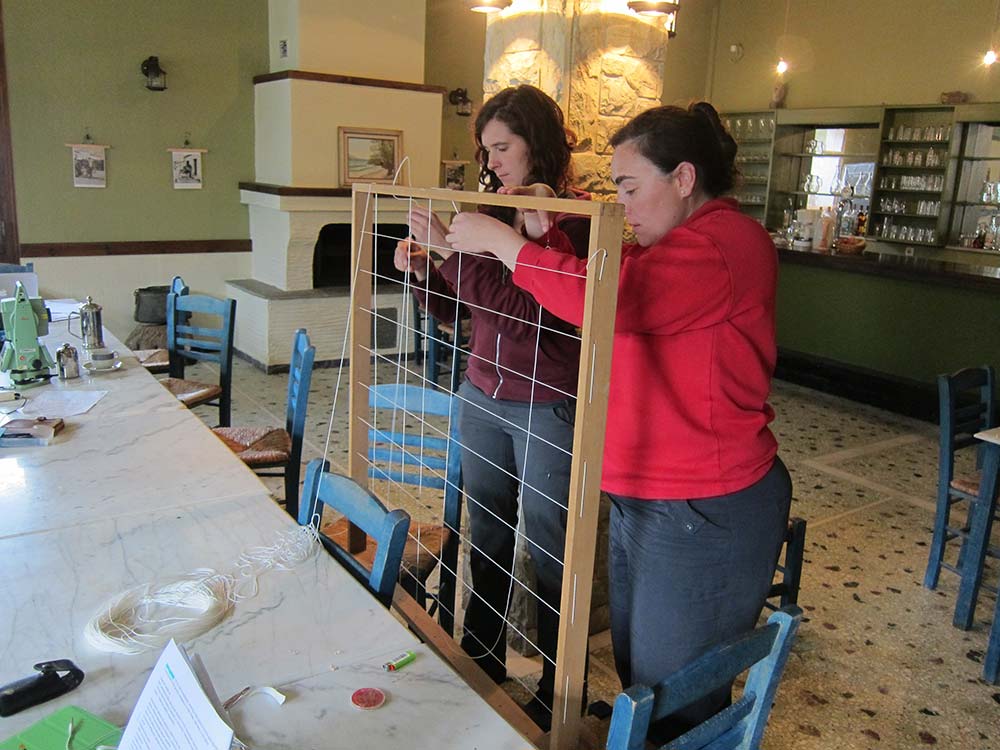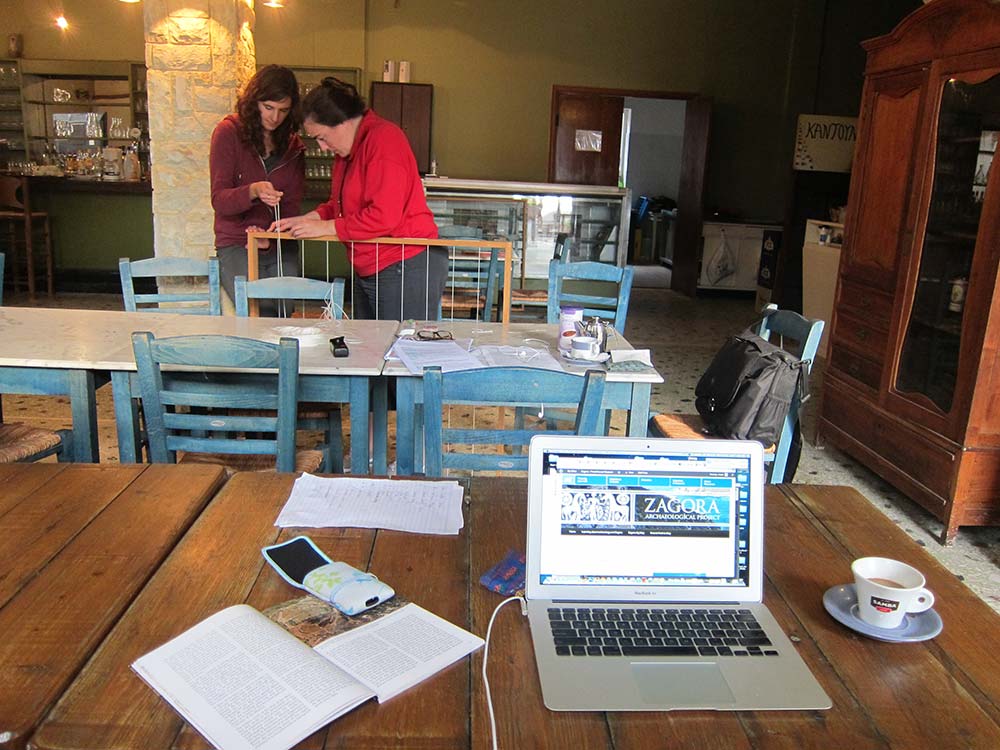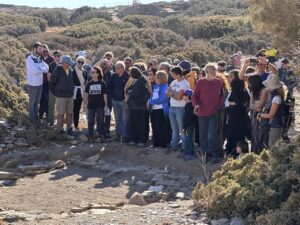by Irma Havlicek
Powerhouse Museum Online Producer

Yesterday, Saturday 17 November 2012, we received the news at breakfast that, due to heavy rain overnight, and with further rain forecast, yesterday’s work on site for most of us was cancelled. However, there were still tasks for all of us.
Steve Vassilakis and Hugh Thomas headed out on a fishing boat to the coast below the site of Zagora to investigate potential landing sites around Zagora. This was to inform considerations about how ancient mariners may have landed here in the past. Steve had been liaising with fishermen at Batsi over recent weeks to arrange this trip, and used his extensive fishing (including commercial fishing) experience to help with this project. Hugh photographed the venture from the boat (and succeeded in keeping sea-sickness at bay).
My travel pals from last weekend (see my posts about our visit to Delos and Mykonos), Paul Donnelly and Rudy Alagich, braved the wet conditions and went down to the site with Bob Miller, a photographer who arrived last night to document work on the project.
There will be a post soon on what they found….
However, back at base here at the Kantouni Pensione, time was not wasted.

Lesley Beaumont had an extensive (three and a half hours!) briefing session with the test trench supervisors, Kristen Mann and Ivana Vetta, and Andrew Wilson, whose role is to bring all the digital data from the survey and excavation into the Heurist database system devised for the Zagora Archaeological Project.
Archondia Thanos went shopping to purchase materials with which to string two planning frames which Lesley Beaumont had brought from Chios. Then Archondia, assisted by Hannah Morris, a volunteer student who also arrived last night, strung the two frames.

These are 1 metre by 1 metre wooden frames, with string pulled taut every 10 cm. These planning frames will be placed on the test trenches (and later, other trenches) to enable drawing/documenting of what is found as each level is excavated.
This means that we will have something like a ‘zoomable’ picture of the site. The overall site with the 15 x 100 metre square grids, divided up into 217 x 20 metre square grids, within which there will be 5 metre square excavation trenches, within which the archaeologists will use the 1 metre square planning frame to draw the details of what is found in the trenches within 10 cm squares.
And I used my time to work on posts for this blog.



1 thought on “Making use of a rainy Saturday”
This is a fascinating story. I keep wondering why it wasn’t reinhabited.